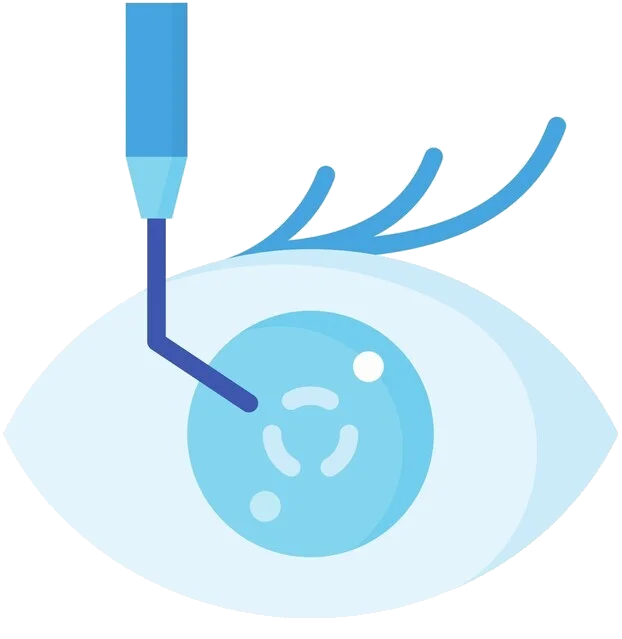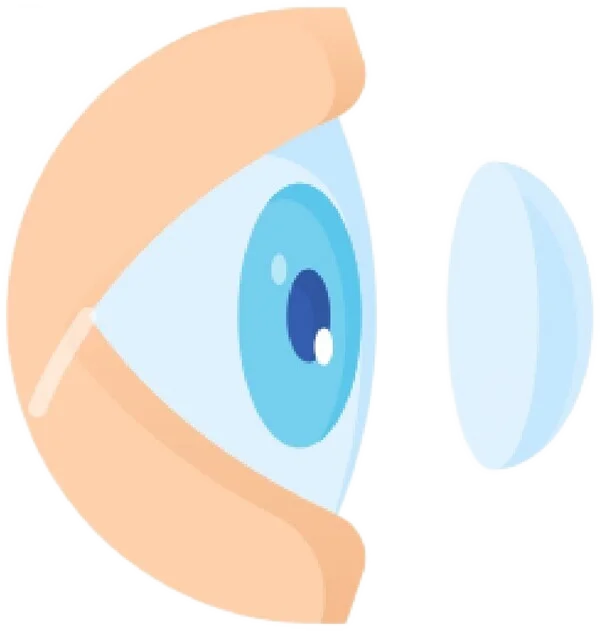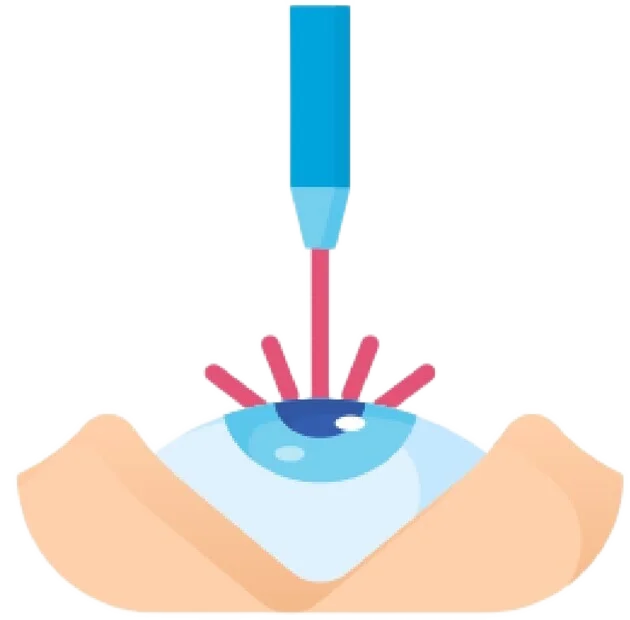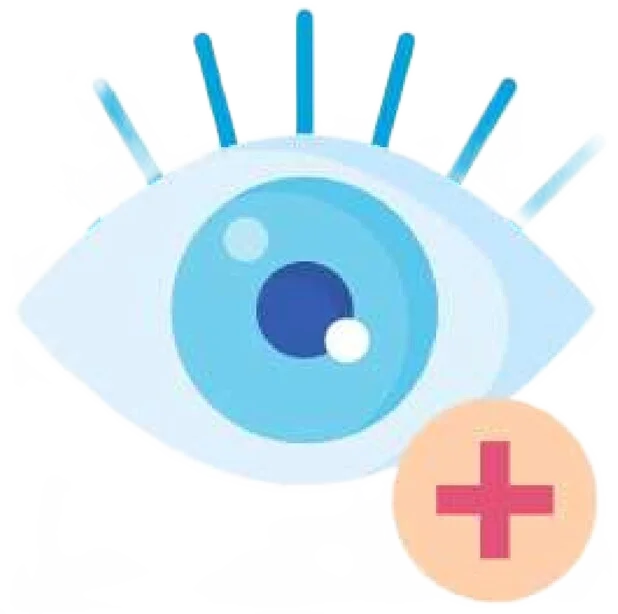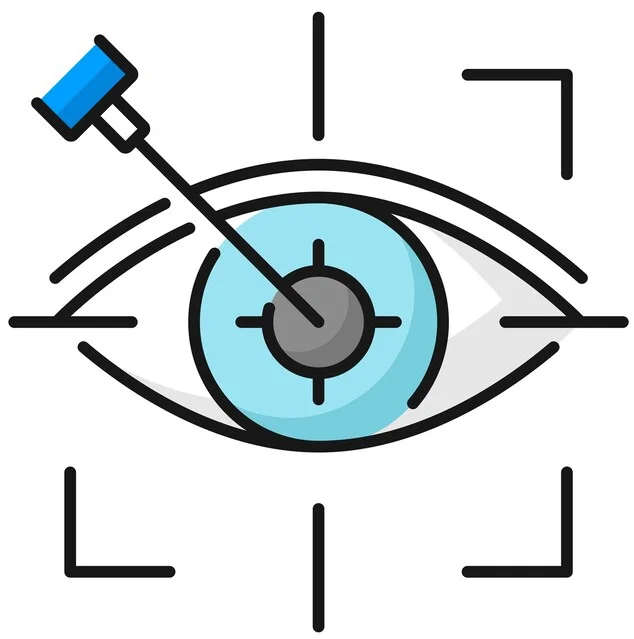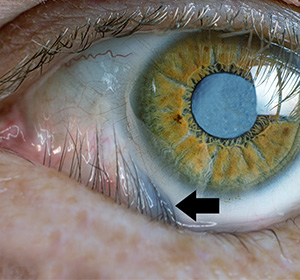
Introduction
What Is an Eyelid Cyst?
An eyelid cyst, also known as a chalazion or meibomian cyst, is a painless lump that forms on the upper or lower eyelid due to inflammation. These cysts occur when the meibomian glands — responsible for lubricating the eye surface — become blocked, causing oil to build up and sometimes leak into surrounding tissues.
Eyelid cysts are common in adults aged 30 to 50 but can also affect children. While typically harmless and non-contagious, larger cysts may press on the eye and occasionally affect vision. Most cysts resolve on their own, but some require treatment or surgical removal.
Causes and Risk Factors of Eyelid Cysts
What Causes Eyelid Cysts?
Eyelid cysts occur when the meibomian glands — tiny oil-producing glands in the eyelids — become blocked. This blockage causes oil to accumulate, leading to inflammation and lump formation.
Key causes and risk factors include:
- Blocked Meibomian Glands
The primary cause of eyelid cysts is obstruction of these oil glands, which prevents normal lubrication of the eye surface. - Chronic Blepharitis
Long-term inflammation of the eyelid margins can cause gland dysfunction and increase cyst formation risk. - Acne Rosacea
This skin condition causes facial redness and blood vessel changes, which may contribute to gland blockage. - Seborrhoea
Overactive sebaceous (oil) glands can cause oily skin and increase the likelihood of cyst development. - Viral or Bacterial Infections
Infections affecting the eyelids may trigger inflammation and cyst formation. - Poor Eyelid Hygiene or Repeated Eye Rubbing
These behaviours can irritate the glands, leading to blockage and cysts.
Understanding and managing these risk factors is important to reduce the chance of cyst recurrence and promote overall eye health.
Types of Eyelid Cysts
The Different Types of Eyelid Cysts
Eyelid cysts can vary depending on their origin, size, and whether infection is present. Identifying the type helps determine the best treatment approach.
Chalazion
- Description:
The most common type, a chalazion forms due to chronic blockage and inflammation of a meibomian gland. It typically appears as a painless, firm lump on the eyelid. - Who it affects:
Mostly adults aged 30–50, but can also affect children. - Speed of progression:
Develops slowly over days to weeks and may persist if untreated.
Sebaceous Cyst
Description:
A cyst formed from blocked sebaceous (oil) glands, usually containing keratin or oily material. These cysts are generally firm and non-tender.Who it affects:
Can occur in any age group.Speed of progression:
Slow-growing, often stable for long periods.
Retention Cyst
- Description:
Caused by blockage of sweat or oil gland ducts, resulting in small, fluid-filled cysts. - Who it affects:
Common in individuals with glandular dysfunction or chronic irritation. - Speed of progression:
Usually small and slow-growing, sometimes transient.
Infected Cyst (Hordeolum or Stye)
Description:
A painful, red, swollen cyst caused by bacterial infection of eyelid glands. Often tender and associated with inflammation.Who it affects:
Anyone, frequently those with poor eyelid hygiene or gland blockage.Speed of progression:
Rapid onset, typically resolves with treatment within days to weeks.
Early Signs & Symptoms
Common Symptoms of Xanthelasma
Recognising the early signs of xanthelasma can help patients seek timely advice and manage underlying health issues. While xanthelasma is usually painless, the visible plaques often prompt patients to consult their doctor or eye specialist.
- Yellowish, flat or slightly raised patches on the eyelids
Typically near the inner corners of the upper or lower eyelids. - Symmetrical appearance
Often found on both eyes but can be unilateral (one-sided). - Slowly enlarging plaques
Growth is usually gradual over months or years. - No pain or discomfort
The lesions themselves do not cause itching or irritation. - Possible cosmetic concern
Many patients seek treatment primarily for appearance rather than symptoms. - Associated with high cholesterol or lipid disorders
May be a sign of underlying systemic health issues.
Diagnosis and Treatment of Eyelid Cysts
Eyelid cysts are usually diagnosed through a clinical examination by an eye specialist who will assess the lump’s size, location, and characteristics. Most cysts improve with conservative treatments like warm compresses and good eyelid hygiene. If infection occurs, topical antibiotics may be prescribed. For persistent or large cysts causing discomfort or vision issues, minor surgery is often recommended to drain and remove the cyst. This outpatient procedure typically uses local anaesthesia and has a high success rate with minimal recovery time.
Why Timely Diagnosis Matters
Early diagnosis of an eyelid cyst is important to prevent complications such as infection, persistent discomfort, or vision problems. Prompt treatment can help reduce cyst size, relieve symptoms, and avoid the need for surgery in some cases.
Timely diagnosis allows your ophthalmologist to:
- Differentiate cysts from other eyelid lumps or more serious conditions
- Prevent infection or inflammation through early intervention
- Preserve eyelid function and protect vision
- Recommend appropriate treatment before the cyst grows or worsens
Addressing eyelid cysts early improves outcomes and helps maintain eye health and comfort.
Continue Learning About Other Eye Conditions
Other Eye Conditions
The eyes are the most complex sensory organ in our bodies. The eyes provide vision by recording images of our surroundings that the brain will interpret. Although the eye measures only about an inch...
Macular Degeneration
The macula is the central portion of the retina, the photosensitive layer at the back of the eye. The macula is responsible for central vision which helps us focus and see details and colours. Central vision enables...
Worried About Your Eye Health?
Schedule a consultation with Mr. Mo Majid to evaluate your eye health.
Quick Answers About Eyelid Cysts
Can an eyelid cyst go away on its own?
Yes, many eyelid cysts, especially small chalazia, can resolve without treatment over a few weeks or months.
When is surgery needed for an eyelid cyst?
Surgery is recommended if the cyst is large, persistent, causes discomfort, or affects vision and does not improve with conservative treatments.
Is eyelid cyst removal surgery painful?
The procedure is usually done under local anaesthesia and is minimally painful, with most patients experiencing only mild discomfort during recovery.


